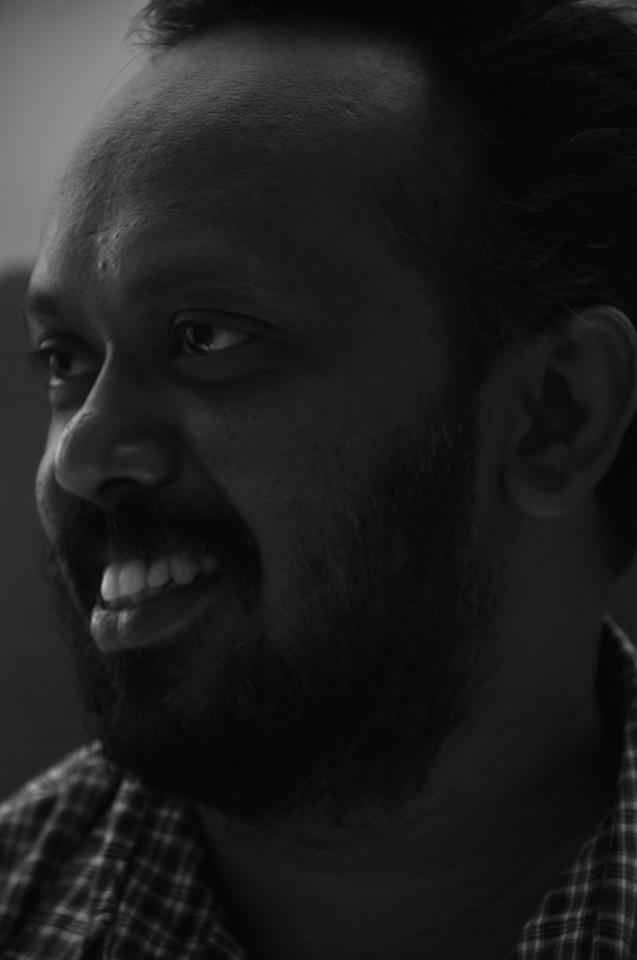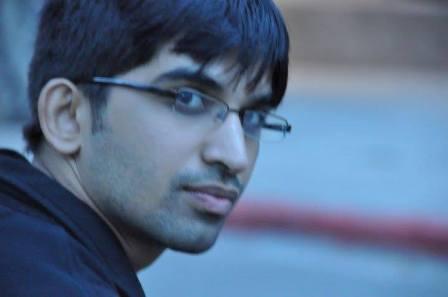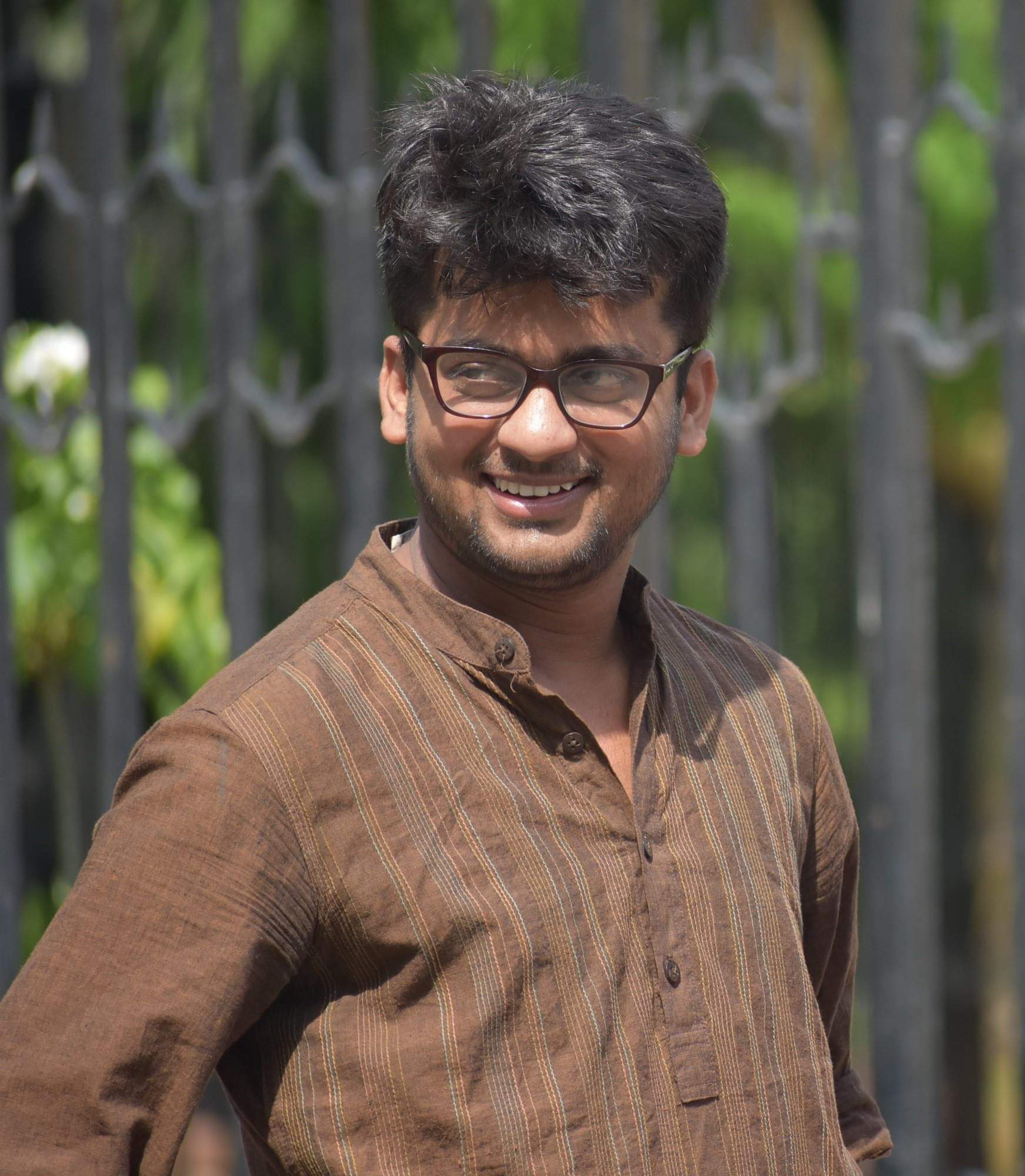Ajith Kumar A S
Critiquing a friend’s film
 This time I would like to have an open dialogue with my friend Rupesh Kumar on his film ‘Don’t be our fathers‘. I think a dialogue in the public sphere would be more productive because more people could engage with it. This month I traveled with him to Delhi and together we screened our films and participated in the discussions around them in universities/colleges. I have seen his film earlier but watched it many more times during the screenings. Here I am trying to speak out my problems with the film.
This time I would like to have an open dialogue with my friend Rupesh Kumar on his film ‘Don’t be our fathers‘. I think a dialogue in the public sphere would be more productive because more people could engage with it. This month I traveled with him to Delhi and together we screened our films and participated in the discussions around them in universities/colleges. I have seen his film earlier but watched it many more times during the screenings. Here I am trying to speak out my problems with the film.
a. Filming caste
I have discussed the question of filming caste in one of my earlier articles in Round Table India. I think filming caste is a difficult task. With my own experience in making a documentary, I have felt that it is a challenge for any film maker to develop a form or a cinematic language to speak about caste. It is also about engaging with the cinematic practices in this part of the world and the history of caste in films. How to capture modern caste in cinema – it would be difficult for two reasons: first of all, modern caste operates in a subtle way and caste is spoken in a different language. In the secular modern domain we need a language that could address these difficulties. The second factor is that (something that we could say) Dalit cinema is just evolving. We indeed have a strong history of Dalit writing but a film maker also has to create a new cinematic language to speak about caste.

Rupesh Kumar’s film ‘Don’t be our fathers’ doesn’t seem to address this difficulty of filming caste. I didn’t find any effective portrayal of caste in Peringeel in the film. We hear old people speaking about their caste experiences in the past. Thus caste in the past is highlighted and we don’t find any instances of contemporary caste violence in it. Why does he rely heavily on the caste experiences of the past? Is it because of his difficulty in addressing modern caste?
b. Caste in the past
I feel that placing caste in the past or in ‘not-yet modern’ villages doesn’t disturb the modern caste mindset. No one, not even a hard core casteist would mind admitting that there was caste in the past. The progressive liberals would be comfortable with this position. It is when we speak about the modern caste practices that the progressive liberals get disturbed. Because this places the progressive liberals within the sphere we are talking about: caste. ‘Don’t be our fathers’ doesn’t disturb the liberal speech on caste because it doesn’t speak about the modern caste practices.
We are shown the new generation in modern attire, playing and laughing aloud. Whereas the older generation is trapped in a realistic narrative technique. The cameras forget to ‘play’. They are static when the older generation speaks to the camera. Rupesh Kumar, who himself was present as a representative of the new generation, plays cricket, fishes, speaks and laughs when he engages with the younger generation. But we see a different Rupesh when he engages with the old. The editing techniques itself are different when he tries to capture the experiences of the older generation. We don’t see any fast cuts. Here it seems he is trying hard to portray the ‘real’. The shift in background score is an interesting factor that tell us the dilemma the director faces when he addresses the caste experiences of the past. In the beginning the background music is mainly a blending of electric guitar and drums. The music pieces sound like rock. But when Menaakshi, an old woman speaks about her caste experiences of the past we listen to the stereotypical musical score that is played with strings. Does it mean that only a realistic narrative technique can capture caste experiences?
c. The idea of patronization
The title ‘Don’t be our fathers’ is claimed to be a political statement against all sorts of patrons. I am not questioning his right to name his film. I will try to speak more about the approach attached to it than my dislike for the title. In many discussions, he has tried to describe that his attempt was to tell the people who have been trying to patronize Dalits not to try to patronize them any more. This raises many questions. Is patronization an approach? Or a discourse or a system? I doubt whether any political force would try to patronize an entire community all the time. There could be a patronizing approach in a position or in a political discourse. We can see a patronizing position when the privileged communities speak about the marginalized. But can we consider it as a grand narrative? Could we say that the people of Peringeel were patronized, controlled or monitored by any outsiders or privileged communities for a long time? What about the agency of the people of Peringeel? I think, that in social relations we always have conflicts and negotiations, and the people who are part of the relation have a role in it. Is it possible to exaggerate the idea of patronization and make it the most crucial problem that Dalits are facing now? What about the achievements we have brought about through constant struggles in different fields. Who have patronized ‘us’?

The overemphasis on the logic of patronization constructs a negative image of victimhood. It constructs an image that Dalits and Adivasis can be easily patronized. If Dalits and Adivasis have the capability of bargaining or determining our role in any social relation what is the need of exaggerating the idea of patronization by the upper castes?
d. Anthropological gaze?
Peringeel is Rupesh Kumar’s father’s place. The film never tries to address the issue of the gaze of the camera. We see people fishing, catching crabs, doing agricultural jobs; they speak about their work itself. This follows the same technique of government documentaries. We see people working and talking about the way they do their work and discuss their income from their work. We don’t hear them talking about other dimensions of their life. They are just ‘laborers’. The attempt appears to freeze them in their ‘workplace’. The ‘exotic’ music in the background helps to anthropologize the people in Peringeel.
e. Who is culture-less?
In the film Rupesh Kumar talks about the ‘culture-less attitude’ of the patronizers. I was shocked to see such a word being used in the film. What does culture-less mean? Isn’t culture-less a loaded term that has been always used against the marginalized who are supposed to be outside the ‘modern’? My question is, shouldn’t we be more careful that nothing in the movie goes against the politics we claim?
f. Dalit land?
The film doesn’t give us any idea about the land ownership in contemporary Peringeel. Why does the director wish to call it a Dalit land? We come to know that there were Mappila landlords but there isn’t any explanation of the contemporary situation and the relation of the people of Peringeel with the other communities. This lack sometimes creates confusion and even leads to a negative interpretation. Somewhere in the discussion about the film there was a question about ‘Muslims trying to deny education for girls’; a local experience was being easily misinterpreted as the problem of Muslims all around the world.
g) Confronting the ‘local’
‘Don’t be our fathers’ is about a locality. I found it hard to understand the specific situation of Peringeel. It looked like any other village in Kerala. The director is more interested in sticking to the ‘local’ space. The characters are fixed in a particular landscape. The engagement of the people of Peringeel with the society outside the locality is entirely missing. The impression created is that all the people living outside are patronizers and the film tries to isolate the locality from the ‘rest of the society’. This, I feel, is not a form of assertion. But a form of marginalization. I think in post-independent India, the Dalits had an opportunity to break the caste practices of the ‘locality’. Government jobs, schools, colleges – all created a possibility of breaking the local specificity of caste. I was thinking about Rupesh Kumar himself. How could he fly to Malaysia and work there and make so many documentary films? Isn’t this possibility of breaking free from the limitations of the ‘local’ that made all these possible? I am not saying that we should completely negate the local. But the ‘local’ must not be a closed space. The new media, especially Facebook, has brought into existence a more wider Dalit community that is not ‘territorial’. It is more a fluid space where we meet different communities from different places.
h. Why fathers?
The title of the film ‘Don’t be our fathers’ becomes interesting when we understand that this is the native place of the director’s forefathers. Could we say that when we say “don’t be our fathers” the logic is that “we have ‘real ‘ fathers'”? In daily conversations we hear people abusing others by calling them ‘fatherless’. This is part of the history of the transformation of the society from a matrilineal one into a patriarchal system. I fear whether this title is reproducing the authority of the father.
i. Where are the Dalit women?
There have been many criticisms from many parts that young Dalit women are missing in this film. That is clearly evident. Hence, I will try to talk about some problems of this invisibility. We see the women laborers in the film, but girls going to school or colleges, government employees or women dressed in modern attire are completely missing. I am sure it is not the case of Peringeel alone. But is it because ‘we’ want to see Dalit women as just workers – agricultural laborers, fish workers or factory workers? Isn’t the diversity and mobility of the Dalit women being denied here?

j. Is a dialogue possible?
In the film we see a casual conversation between the director and his friends. The complaint is that people bother about where we go what we do. I think this anxiety is visible in many of the villages and households in the city. Morality and anxiety over others’ pleasures are also the factors that lead to it. I agree that caste plays a major role in it. But the possibility of a conversation in a public place could be a positive thing. It is a form of social engagement. Democratization of the public space is very important. The anti-caste struggles for the right to walk on public streets, redefined the public space. It has been argued that the new possibilities of modernity, such as public transport, cinema halls and educational institutions have played a major part in redefining the public space. I think we need a more inclusive place where dialogues are possible.
A critique of the left?
The weakest part of DBOF is the critique of the left. Kannur being one of the places where the political and social spaces are dominated by the left parties, this film doesn’t show any complexities of the relationship with the communist parties. The only dialogue that refers to the communist party is when an old party member from Dalit community is asked “earlier you were a party member, isn’t it?” He says, yes, and when he is asked “now why are you not a party member” the answer is ‘enikku budhi vannu’ in Malayalam subtitled as ‘now I got sense’ (the subtitle doesn’t convey his answer). I have problems with this articulation. This reproduces the common sense that the Dalits are naive and easily fall into the trap set by others and realize it only very late. I don’t think Dalits were being ‘used’ or were part of the movement earlier because they were not politically conscious. I would say the Dalits must have had political reasons for being part of the communist party at a different political moment, and now we have different reasons to leave the party or break away from left ideology. This is a political shift. It is not something concerned with someone’s wisdom.
I am more concerned about the political questions raised by the movie. I believe that a very critical engagement with these issues could lead us to a more effective search for a Dalit cinema or an anti-caste cinema.

Rupesh Kumar, director of ‘Don’t be our fathers’
~~~
Ajith Kumar A S is a Dalit musician, writer and filmmaker based in Trivandrum.










